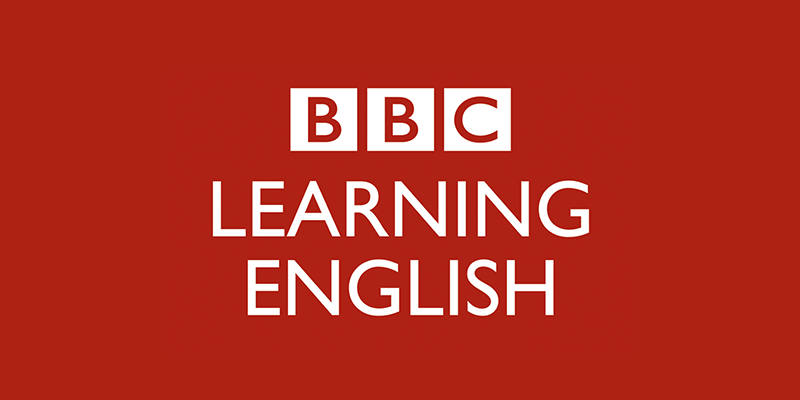BBC 6 minute English-What’s in a fairy tale
Transcript of the podcast
This is not a word-for-word transcript
Sophie: Hello and welcome to 6 Minute English. I’m Sophie
Neil: And I’m Neil. So, Sophie I watched Snow White and the Huntsman on TV last night
Sophie: Oh, you mean the modern retelling of the story Snow White? Did you enjoy it, Neil
Neil: It was OK. But the seven dwarves were no fun. I prefer the original Disney cartoon version
Sophie: Don’t be silly, Neil. Walt Disney didn’t invent the story. The movie you watched is a remake, a film that has been made again, but the fairy tale is very old
Neil: Well, that may be true, but I still prefer the Disney version with funny dwarves. In the new version, even the names of the dwarves are different and, you know, serious looking
Sophie: But this new version is for young adults – it’s a different genre – or style – of film. Names like Sneezy, Dopey, Happy and Grumpy are too childish
Neil: Hmm. What’s wrong with childish
Sophie: It’s right up your street, isn’t it Neil
Neil: Too right
Sophie: Anyway, fairy tales are the subject of today’s show, and I have a question for you: which movie star played the role of the evil fairy in Maleficent, a 2014 film based on the fairy tale Sleeping Beauty? Was it
a) Cate Blanchett
b) Angelina Jolie? Or
c) Meryl Streep
Neil: Well, I’ll go for a) Cate Blanchett. She often plays evil characters. I can’t forget her in the 2008 movie Indiana Jones and the Kingdom of the Crystal Skull
Sophie: Well, we’ll find out if you chose the right move star later on in the programme. But to return to the idea of childish fairy stories, let’s listen to Diane Purkiss, a children’s author, talking about how originally fairy tales were intended for an adult audience
INSERT Diane Purkiss, children’s author
Interestingly there has been a bit of a move towards seeing fairy tales as an adult, or at any rate a young adult – a dark sort of genre. And that’s natural because actually in the past fairy tales were told by adults to adults in William Shakespeare’s time. It’s only in the Victorian era that they become moral children’s tales and it looks like we’re going back to the inception of fairy stories now with a more adult take on them
Neil: Diane Purkiss. So these Hollywood remakes aimed at the teen market are actually returning fairy tales to an adult audience
Sophie: That’s right, Neil. And dark here means scary or frightening. The Victorians toned down this dark content – or made it less forceful. They also introduced a moral – or message about what’s right and wrong – to the tales
Neil: And inception means the beginning. So fairy tales began as a dark genre
Sophie: Can you give us some examples of dark stories written by the brothers Grimm, Neil
Neil: Well… I have a list here. Let’s see. In The Frog Prince the princess doesn’t kiss the frog, she throws it… she throws it against the wall! Hmm, yes
Sophie: Hmm. I prefer the kiss version
Neil: And in Little Red Riding Hood don’t believe that version where the wolf shuts granny in a cupboard. In the real version he gobbles her up and then eats Red Riding Hood for dessert
Sophie: Charming. And to gobble something up means to eat it very fast. OK, that’s enough. Let’s move on. Did you know that some of the stories – like Beauty and the Beast, Red Riding Hood, Cinderella, and Snow White go back much further than the earliest written stories – even the ones in Latin and Greek
Neil: No, I didn’t. To be honest, Sophie, I thought Walt Disney had written them
Sophie: Oh Neil… well research suggests that some fairy tales date back to well before the brothers Grimm and even Shakespeare. Let’s hear more from Dr Jamie Tehrani, anthropologist at Durham University in the UK
INSERT Dr Jamie Tehrani, anthropologist at Durham University
Dr JTehrani: So these fairy tales that we’ve looked at – we’ve been able to trace back, really, thousands of years – probably sort of 4-6,000 years is the origin of many famous European folk tales, stories such as Beauty and the Beast BBC Reporter: What, 6,000 years Dr J Tehrani: Yep, going right back to the Bronze Age BBC Reporter: Good heavens Dr J Tehrani: We’ve been able to trace the transmission across generations of these stories much further back than is generally recognized
Neil: But Sophie – if there’s no written evidence of the stories from 6,000 years ago how does Dr Tehrani, who we’ve just heard from, know people were telling them
Sophie: Well, dating languages isn’t something I’m familiar with – I think it’s a bit like looking at a few dinosaur bones and trying to reconstruct what dinosaurs looked like. But here you’re trying to reconstruct stories without any actual bits. It must have been hard work for the researchers
Neil: Indeed. Well, I think it’s time to hear the quiz question again, Sophie
Sophie: OK, I asked: Which movie star played the role of the evil fairy in Maleficent, a film based on the fairy tale Sleeping Beauty? Was it
a) Cate Blanchett
b) Angelina Jolie? Or
c) Meryl Streep
Neil: I said Cate Blanchett
Sophie: And you were wrong. Angelina Jolie played the main character in the film Maleficent. Cate Blanchett played the elf queen Galadriel in Lord of the Rings. And Meryl Streep played a blue-haired witch in the 2014 film Into the Woods
Neil: Now, can we hear those words again
Sophie: OK
remake genre dark toned down moral inception gobble up
Neil: Well, that’s the end of today’s spellbinding 6 Minute English. Don’t forget to join us again soon
Both: Bye
